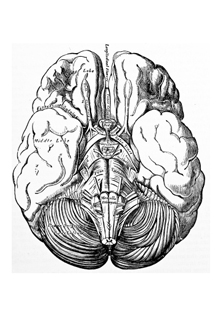Strokes Don't Discriminate

Photo: mstroz/iStockphoto
Since 1988, the incidence of stroke for middle-aged women has tripled, according to a recent study. The lead author of the research, Amy Towfighi, MD, an assistant professor of neurology at USC, found that one reason for the sharp increase is that American women—like men—have begun putting on weight around the waist, a significant risk factor. What's more, women fare worse than men after strokes, with higher risks of lasting disability or death. Towfighi believes women can turn those numbers around with a better understanding of the risk factors and signs of stroke.
Women don't realize they're at risk
High blood pressure, high cholesterol, and obesity all place a woman at risk for stroke. But diabetes, which disproportionately affects women after the age of 45, and pregnancy can also increase risk. For reasons that aren't completely clear, migraine headaches, especially with auras (characterized by visual disturbances such as lights or blind spots), are linked to stroke—even in women under 40. Migraines, high blood pressure, and smoking are particularly dangerous for women who take oral contraceptives. If you have any of these factors, talk to your doctor about ways to reduce your stroke risk.
Women have different symptoms
A woman experiencing a stroke is more likely to feel face and limb pain, shortness of breath, hiccups, or nausea than classic symptoms like numbness on one side of the body or dimming or loss of vision. That means not only that women are less likely to rush to the ER when a stroke hits (they take up to 46 percent longer to get to the hospital than men) but also that doctors can miss the signs. If you're in a high-risk category and have symptoms, don't hesitate to go to the ER and inform doctors as soon as you arrive that you may have suffered a stroke. The more quickly you are treated, the better your chances of recovery.
Women don't realize they're at risk
High blood pressure, high cholesterol, and obesity all place a woman at risk for stroke. But diabetes, which disproportionately affects women after the age of 45, and pregnancy can also increase risk. For reasons that aren't completely clear, migraine headaches, especially with auras (characterized by visual disturbances such as lights or blind spots), are linked to stroke—even in women under 40. Migraines, high blood pressure, and smoking are particularly dangerous for women who take oral contraceptives. If you have any of these factors, talk to your doctor about ways to reduce your stroke risk.
Women have different symptoms
A woman experiencing a stroke is more likely to feel face and limb pain, shortness of breath, hiccups, or nausea than classic symptoms like numbness on one side of the body or dimming or loss of vision. That means not only that women are less likely to rush to the ER when a stroke hits (they take up to 46 percent longer to get to the hospital than men) but also that doctors can miss the signs. If you're in a high-risk category and have symptoms, don't hesitate to go to the ER and inform doctors as soon as you arrive that you may have suffered a stroke. The more quickly you are treated, the better your chances of recovery.
As a reminder, always consult your doctor for medical advice and treatment before starting any program.



